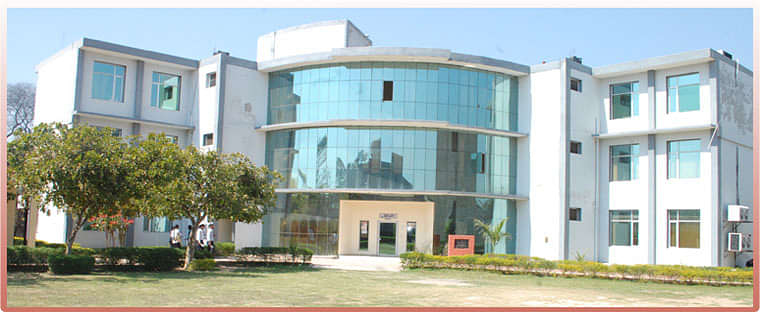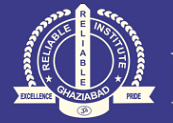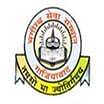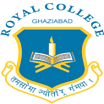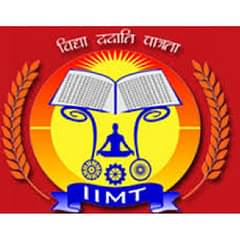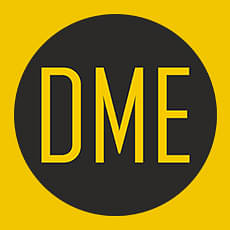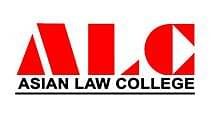Related News

International Affairs for CLAT 2025: Monthly and Day-Wise
International Affairs is a part of the Current Affairs section in CLAT 2025. From this section, students can expect 28 to 32 questions with a weightage of 25%. The candidates have a chance to improve their overall CLAT 2025 score if they prepare this section properly. The CLAT Current Affairs section includes Current Affairs, International Affairs, Economy and Science, History, International Events, Static GK, Arts and Culture, etc.

Important Maths Questions for CLAT 2025
By familiarising yourself with key topics and strategies for problem-solving, you can do very well in maths questions for CLAT which follow patterns that are intended to test your logic rather than your memorization abilities. Also, practising through sample papers and CLAT previous year question papers can also help in sharpening the skills and confidence to possibly turn the Mathematics section into an edge in the high-stakes competition of CLAT 2025.
Also Read: Important Topics for CLAT 2025 GK and Current Affairs
Important Maths Questions for CLAT 2025
Here are some of the important maths questions for CLAT 2025 exam from previous years’ Common Law Admission Test papers that you must solve and understand to gain a better understanding and problem-solving capability in this section:Passage 1
A survey was conducted about the population of a particular region having a working population of three lacs and information was collected about self-employed persons, casual wage workers, regular salaries employees of both urban and rural areas of the region. Self-employment is a key source of income in both rural and urban areas but it is more prevalent in rural areas (56% of the rural population) than in urban areas (40% of the urban population). Rural population was 48% of the total population. Regular salaried workers in urban areas were 48% of the urban population whereas in rural areas, regular salaried workers constituted 12% of the rural population. During the survey, the casual wage workers were found to be more common in rural areas than in urban areas. Casual wage workers in rural areas were 32% of the rural population whereas it was 12% of the urban population in urban areas.Based on the above information, answer the following questions.
Q. By what percentage the number of self-employed workers in rural areas is more than the number of self-employed workers in urban areas?
29.23
33.24
35.01
34.32
Q. What is the ratio of urban and rural working population?
12:13
11:12
13:12
03:08
Q. If urban population of the region increased from 52% to 56% and percentage of self employed in urban region remains same, then number of self-employed people in urban areas are:
66840
68640
62700
67200
Q. What is the total number of regular salaried employees of the region?
90216
91260
92160
96210
Q. What is the percentage of regular salaried employees in rural areas corresponding to the number of casual wage workers in urban areas?
72.3%
79.8%
88.7%
92.3%
Q. If 60% of the total working population of the region were self-employed in rural areas and 40% of total population were self-employed in urban areas, then what is the ratio of rural self-employed to urban self-employed?
‘
2:3
3:2
13:18
18:13
Passage 2
“In an organization, the total number of employees working in various Departments viz. IT, Marketing, Purchase, HR, Accounts and Production are 4,500. The information regarding department wise percentage of employees was collected and also record about gender ratio of employees was prepared. 18 percent of the total number of employees work in the IT department and the ratio of males to females in the IT department is 2 : 1. In Marketing, the ratio of males to females is 2 : 3 and the number of employees engaged in marketing is 20% of the total employment. 12% of the total numbers of workers are running the HR department and the ratio of males to females in this department is 5 : 1. The fraction of male to females in the production department is 3 : 2 and the total number of persons employed in this department is 15% of the total workforce. The number of persons occupied in the purchase and accounts department is 24% and 11% respectively of the total number of workers. Gender Ratio (Ratio of males to females) in Purchase department is 1:1 and in Accounts is 1:2.”Q. How many females are employed in the Purchase department?
450
540
495
595
Q. How many employees are working in IT and Accounts departments together?
1,702
1,646
1,766
1,305
Q. What is the ratio of the total number of males to the total number of females working in all the departments put together?
63 : 41
19 : 27
41 : 34
34 : 41
Q. Number of females in the Marketing Department forms what percentage of the total number of employees in the organization?
8%
7%
12%
10%
Q. What is the ratio of the number of males in the Marketing Department to the number of males in the HR department?
4 : 5
5 : 4
7 : 3
6 : 7
Passage 3
A newly formed state government wants to bring more development in the state. Therefore, the government proposed to launch various welfare programmes. Before bringing up any welfare programme, the state government intended to understand the population percentage of the state by age groups, so that the government could plan the welfare programmes accordingly. The state government found that 30 percent of the population were children between the age group of 0-15. Next to the child population, 17.75 per cent of the population were adolescents between the age group of 16 and 25. The early adult population, i.e., the age groups 26 to 35 were 17.25 per cent, 36 to 45 were 14.50 per cent, respectively. The population who are between the age group of 46 to 55 constitute 14.25 per cent and the elderly population of the state, i.e., 56 to 65 (5.12%) and 66 above (1.13%) was comparatively less than the other age groups. To get a better clarity, the state government concerned is seeking the answers to following questions:
Q. Out of every 5,600 persons, what is the number of persons below the age of 26 years?
2515
1746
1660
2674
Q. There are 400 million people below 36 years old. How many million (approx.) people are in the age group 56-65?
32.72 million
25.75 million
31.50 million
59.30 million
Q. If the difference between the number of people in the age groups 46-55 and 26-35 is 15.75 million, then the total population of the state is approximately?
360.23 million
390 million
400 million
525 million
Q. Which age group accounts for the maximum population in the state?
16 to 25
26 to 35
36 to 45
None of the above
Passage 4
Automobiles are the most preferred mode of transport because they allow us to cover large distances quickly. Resultantly, vehicles have been developed that run on diesel, petrol and even on electricity, which is a remarkable innovative development. During a survey about the percentage wise distribution of cars in four different states, the information regarding the ratio between the diesel engine cars, petrol engine cars and electric cars was collected. Total number of cars for which data was collected was 8000. Of these, State 1 had 15% of the total cars in the ratio of 3:4:1 (diesel, petrol and electric); State 2 had 20% of the total cars in the ratio of 5:3:2 (diesel, petrol and electric); State 3 had 30% of the total cars in the ratio of 4:5:3 (diesel, petrol and electric), and; State 4 had 35% of the total cars in the ratio of 7:5:2 (diesel, petrol and electric).
Based on the above information, answer the following questions.
Q. If 45% of the electric cars in State 4 are air conditioned (AC) and the remaining are non-AC, what is the number of non-AC cars?
380
240
220
180
Q. Number of petrol cars in State 2 is how much more than the number of diesel cars in State 1?
4.67%
9.23%
3.33%
6.67%
Q. What is the ratio of diesel cars in State 4 to electric cars in State 3?
7:3
3:7
7:4
4:7
Q. Compute the percentage of total electric cars to total cars in all the States.
19.37%
18.37%
18.73%
19.57%
Q. What is the difference between the number of petrol cars in State 3 and diesel cars in State 1?
350
400
500
550
Q. What is the average number of diesel cars in all the States?
810
862.5
886
912.5
Passage 5
“World fruit production went up 54 percent between 2000 and 2019, to 883 million tonnes. Five fruit species accounted for 57 percent of the total production in 2019, down from 63 percent in 2000. Use the data in the passage to answer the following questions.”Q. What was the world fruit production in 2000?
474 million tonnes
517 million tonnes
573 million tonnes
406 million tonnes
Q. Of the five fruit species mentioned in the passage above, the share of bananas and plantains increased by 1 percentage point between 2000 and 2019, watermelons in 2019 was 6 percentage points lower than bananas and plantains in 2000, apples remained stable at 10%, and the percentage share of oranges and grapes reduced to half of bananas in 2019. What was the percentage of bananas and plantains in 2019?
17%
18%
16%
21%
Q. Of the watermelons in 2000, one-eighth perished, one-fifth of the remaining was sold to be juiced and 30% of the remaining was exported. If the percentage share of oranges in 2000 was equal to the percentage share of watermelons in 2019, how many watermelons were retained for home sale and consumption?
39.2 million tonnes
1.6 million tonnes
16.8 million tonnes
2.7 million tones
Q. Assume that all grapes and apples were sold through a single organisation in 2000. Grapes and apples were sold to 4 different customers such that a certain quantity of apples were sold to the first customer, the same number of apples were sold to the second customer as to the first and a certain number of grapes were sold to that customer after which the apples were over. Twice the quantity of grapes sold to the second was sold to the third customer and twice the quantity sold to the third was sold to the fourth customer. The total quantity of grapes is equal to the total quantity of apples sold and the remaining grapes were stored. How many grapes were sold to each customer?
19.1 million tonnes
8.2 million tonnes
28.6 million tonnes
9.4 million tonnes
Q. Frutopia and Fruitfix both sold oranges at the same selling price. However, Frutopia gave customers a 15% discount on the marked price whereas Fruitfix sold the oranges for a discount of 20% on the marked price. If the marked price of oranges on Frutopia is 75/ kg, what is the marked price of oranges on Fruitfix?
Rs 78
Rs 82
Rs 90
Rs 80
Note: All the answers to the MCQs are marked in bold.
Types of Maths Questions for CLAT 2025
CLAT Maths section entails passage based questions with 4-5 MCQs with only one correct answer. Each passage contains data which candidates are supposed to read and understand, and then solve each of the questions to reach the correct answer. In a single passage, questions can be asked from various topics like profit and loss, percentage, mensuration, speed, time and sistance, etc. This section gives a brief overview of the topics of CLAT Maths section:
- Data Interpretation: Candidates are given information in the form of figures including graphs, charts and tables and questions are to be answered based on this information.
- Arithmetic: Potential questions may include basic addition, subtraction, multiplication, division, percentages, profit and gross margin, and ratio and proportion.
- Algebra: This involves solving equations, inequalities, and general concepts in algebra coupled with knowledge of algebraic expressions.
- Mensuration: Issues connected with the measurement of the figures, geometrical figures, the area of figures, the volume of the figures, and the sum of the surfaces of the figures.
- Time, Speed, and Distance: Candidates have to solve these questions based on mathematical formulas related to speed, distance, and time.
- Statistics: Meaning and computation of averages, measures of central tendency, estimation of results and meanings of statistical data.
- Logical Reasoning with Numbers: There may also be questions with a certain degree of analysis of numbers, logic types of questions.
Also Read: Private Law Colleges in India Accepting CLAT 2025
Tips to Answer CLAT 2025 Maths Questions
Here are some focused and strategic tips that will help you solve every question correctly in the CLAT 2025 Maths section:
1. Understand the question
- Try to understand the question and the information that is given in it.
- Identify the mathematical calculations and operations that are involved
- Try to draw or sketch the problem and then try to analyse the problem in chunks.
2. Apply appropriate mathematical techniques
- Determine the equations, formula or method that can be used to solve the issue at hand
- Work through solutions and include a breakdown of the steps to get to the proposed solution.
- Minimise the number of calculations by utilising shortcuts and mental calculations whenever possible
- Extend your ability to memorise to the point where you know tables up to 25 by heart, squares, and cubes up to 20 for good measure. Doing it this way, you are able to answer these questions in the shortest time possible.
- Do not forget to write down the formulas for each topic that would be useful in solving problems based on applications.
3. Verify your answer
- Always make sure that you have not made any mistakes when calculating results.
- Make sure your answer makes sense and correlates with the statement in the question
- Use the process of elimination when checking the answer options
4. Manage your time wisely
- Spend more time on longer and more complicated questions
- Use this as a guide to try the easier questions first so that you feel confident with the scoring process.
- Skip a question if too difficult to answer and review it if there is still time available
- A lot of time should not be spent while doing this part of the examination. It is advisable to be sharp in using the right technique and to address the problem.
5. Practise regularly
- Practise different questions from each topic to improve efficiency
- Solve previous years’ papers and CLAT mock tests to know about the pattern of examination
- As you work through practice questions, make sure to time yourself, if you want to enhance your speed.
6. Focus on the fundamentals
- Review simple concepts from class 10 syllabi such as arithmetic, algebra, and mensuration
- Learn the concepts to be applied in solving problems rather than just memorising the formulas to apply.
- To develop an understanding of the various concepts, clears the uncertainties and misunderstandings.
The Quantitative Techniques/ Maths questions in CLAT 2025 plays an important role and can be a deciding factor for those who wish to get a top rank. This segment can easily be converted into another area of strength provided that the candidates have adequately prepared in maths by learning the necessary topics and rigorously doing practice problems. Some of the major strategies to successfully score good marks with important maths questions for CLAT 2025 involve emphasising major topics such as Ratios, Algebra, Mensuration, Probability, and Data analysis, revision of previous year question papers and mock tests, examining errors, etc.
The improvement of performance in the Important Maths Questions for CLAT 2025 is thus possible with regular practice and the appropriate preparation strategy. Doing well in this section, coupled with good scores in the other fields, may help one do well in CLAT and thus stand a great chance of getting admission in some of the top law universities in India .
For more latest updates on CLAT 2025, stay tuned to CollegeDekho . Also, for any query head to our Q&A Zone or fill out our Common Application Form .

SC Judgement on AIBE XIX 2024 Final Year Students Plea: Decision in favour of students, details
SC Judgement on AIBE XIX 2024 Final Year Students Plea: As per the current verdict, the three Judges of the Supreme Court, Dr DY Chandrachud, CJI, JB Pardiwala, and Manoj Misra, JJ passed an order, which allowed the final year candidates in the All India Bar Examination (AIBE) exam, which will be conducted on November 24, 2024.

Current Affairs for CLAT 2025: Monthly and Day-Wise Current Affairs with GK Questions

CLAT 2024 100 Days Preparation Strategy & Study Plan
CLAT 2024 will be held on December 03, 2023. Students have almost 3 months to strengthen their CLAT preparation in order to get a good rank in the exam. With the ideal plan and preparation guide, aspirants can ace CLAT 2024 and secure admission to their desired law college.
CLAT - Common Law Admission Test is held annually to ascertain admission to the five-year integrated law programmes at accepted National Law Universities (NLUs) and other prestigious public and private law schools. The admission test evaluates candidates based on a variety of criteria. Students who intend to take CLAT 2024 must devise an overall and sectional study plan due to its sectional structure.
Related Questions
Admission Updates for 2024
Invertis University
Bareilly (Uttar Pradesh)
TEMPL Group of Institutions
Ghaziabad (Uttar Pradesh)
Vishveshwarya Group of Institutions
Greater Noida (Uttar Pradesh)
IAMR Group of Institutions
Ghaziabad (Uttar Pradesh)
KCC Institute of Legal And Higher Education
Greater Noida (Uttar Pradesh)

